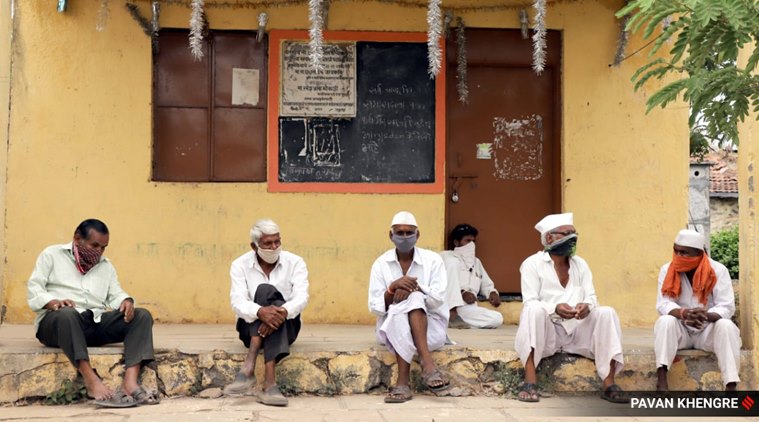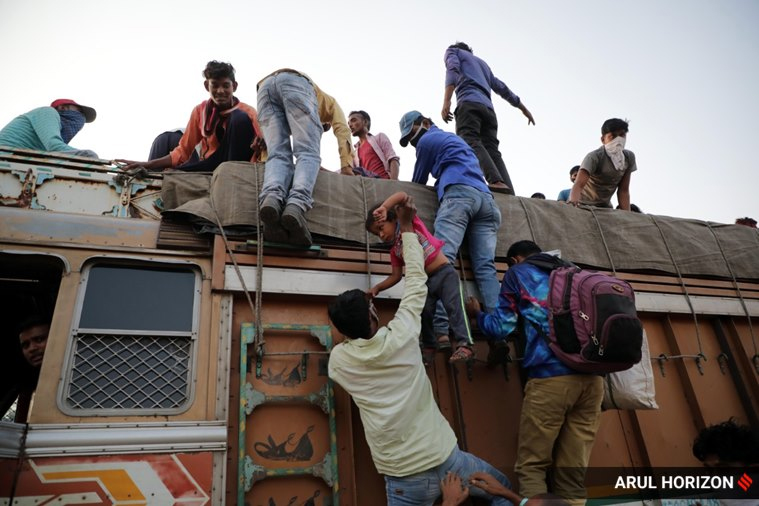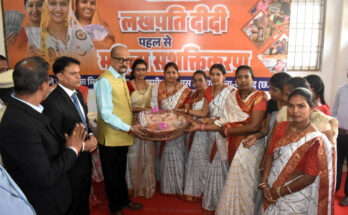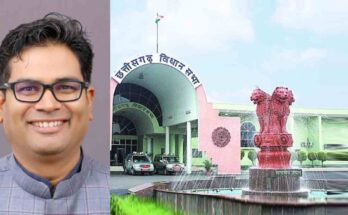New Delhi 20 May 2020. Riyaz Ali, a 25-year-old migrant labourer working in Pune, knew “two-days” was the distance between him and his family back in Uttar Pradesh’s Rampur district. That’s the time he would take by train. However, when he set out for home last week to escape the hardships triggered by the lockdown, he found out – for the first time – that Rampur was 1,460 km away and it could even turn out to be a journey of “full seven days”.
Riyaz had to camp on the highway on Pune outskirts for two days before he could board a bus running illegally to Lucknow and after paying three times the usual fare. When he reached Lucknow, he squeezed in with 20-odd passengers of an ‘essential supplies’ tempo carrying wheat-flour bags for another five hours before he could finally make it
Once home, an exhausted Riyaz “ate like a horse” and then slept for “a day and a night” straight. He woke up to a ruckus outside his door.
A neighbour, who was also a distant relative, had come to know of Riyaz’s return from Covid-19 hotspot’ Pune and was quarrelling with the family for letting Riyaz return and “put everyone in the village in harms’ way”.
Riyaz showed him a medical certificate he had obtained before leaving Pune that stated he had no COVID-19 symptoms and also offered to be quarantined for 14 days in the village school.
Nothing would, however, calm down the neighbour. “People go to the city when they want money and run to the village when in danger,” was his refrain.
The neighbour, said Riyaz, had previously requested him to look for work for his son in Pune. “Now this same person is treating me as if I have committed a crime by going away to earn,” said Riyaz over the phone from his village in Tanda tehsil of Rampur district.
Rushing home against all odds only to discover that you are no longer welcome is a predicament being faced by many among the millions of migrant workers who have returned, and are still in the process of returning, to their native places in the wake of the pandemic.
Owing to the highly contagious nature of the disease, there is a change in people’s attitude towards the migrants who traditionally spend eight to 10 months in the metro cities and return home for a few months every year.
Because of the nature of their engagement with the city, the migrant workers do not have any permanent accommodation in the city and are forced to return to their villages.
The locals and the administration are worried that the return of migrants, especially from cities like Mumbai, Pune and Delhi, which have seen the worst outbreaks of COVID-19 in the country, will result in a spike in cases in rural communities.
In Uttar Pradesh, according to the administration, the local health workers are surveying the returned migrants and testing those who show primary symptoms. On May 18, 44 workers who had returned from Pune to Basti district two days earlier in a truck, were found positive.
Migrant numbers
Most of the interstate migrants in India come from 64 districts of Middle Ganga Plains comprising eastern Uttar Pradesh and some of the poorest districts of Bihar. Apart from this, other source states for migrants are Chhattisgarh, Madhya Pradesh, Jharkhand, Orissa and West Bengal.
R B Bhagat, Professor and Head of the Department of the Migration and Urban Studies at International Institute of Population Sciences (IIPS), Mumbai, estimates that there are 15 million temporary and circulatory migrants in the country who work at urban areas away from their place of origin. They are mostly employed in the construction sector, manufacturing or work as street vendors and hawkers and in various informal sectors in the urban economy.
COVID-19 pandemic and the subsequent lockdown has badly affected this lot which is returning home or waiting to return. Altogether, the number of returnees will be close to 25 million, which includes about 15 million circulatory migrants and about 10 million semi-permanent migrants.
Professor Tahir Thachil of Vanderbilt University (USA) says the circular migrants – those who go to the metros for work but return to their homes for a few months every year – remain deeply rooted in their villages. They live and work in inhospitable conditions in the cities and also face harassment at the hands of police or local elites. When the only motive, namely work opportunity, of enduring these hardships is hampered, it’s only natural for them to want to return home.
According to Prof Bhagat, the “fear in the village communities” about the spread of the virus due to returning migrants is not widespread and that the situation
could have been better had the return of the migrants was “better-planned”.
“The return has created some fear in the village communities. However, they are receiving immense support in many places where they are kept in schools or outskirts of the villages and the villagers are providing them with food during the quarantine period. A planned return and rehabilitation with the family will be more effective in containing the spread of COVID-19 than being left wandering helplessly in the urban areas,” Prof Bhagat told.
Quarantine: A cause for trouble in the village
With hordes of migrants, students and others returning to villages, the unwillingness shown by some of them to go into quarantine as a precautionary measure are causing frictions within village communities. This, locals and officials say, is leading to quarrels and, in some cases, even resurfacing of old caste-linked or political animosities.
 Maharashtra governmetnt has asked the village panchayats to institutionally quaratnine all returning migrants from Pune, Mumbai, Nagpur, Nashik and Aurangabad.
Maharashtra governmetnt has asked the village panchayats to institutionally quaratnine all returning migrants from Pune, Mumbai, Nagpur, Nashik and Aurangabad.
Not only inter-state migration but even inter-district reverse-migration caused by the pandemic, is becoming a reason for discord in the rural areas, local officials and migrants who have returned home recently say.
For example, in Shirur Kasar village in Beed district of Maharashtra, a Dalit man was assaulted by a group of upper-caste residents after his son, being a member of the Vigilance Committee, decided to send two upper-caste families to an institutional quarantine facility upon their return from Aurangabad, about 125 km away from Beed.
Subhash Waghmare told the police that they threatened to kill his family before slapping him in the village market: “Why did your son send us to quarantine? There are only two houses of your community in the village. We will finish you off!”
On May 18, a First Information Report (FIR) was registered at Nila village in Parbhani District against several men who assaulted a lower-caste sarpanch for allegedly giving preferential treatment to a lower-caste family while quaratining them.
Rahul Gangarde, who works as a gram sevak (panchayat secretary) in Ahmednagar district’s partner taluka, says caste tensions, political skirmishes and scuffles over quarantining the returning migrants have become common. “It’s a big headache for us. It’s triggering old political rivalries and enmities over land disputes and we are left with resolving those than working on taking preventive measures. Similarly, public workers such as health department staffers, Asha Workers and Anganwadi Sevikas are being targeted by residents for informing the administration about a returning migrant,” said Gangarde.
‘Won’t’ return to the city any time soon’
As migrant labourers return in overcrowded trucks, pedalling bicycles or on foot, they point out that the loss of wages due to lockdown did not affect them so much as the inconvenience and pain caused by having to depend on donated food packets for meals and the arduous journeys back home. “Those returning now won’t be back for a long time. We are exasperated by the pain they had to endure this time,” said Ahmed, a migrant worker from Basti in Uttar Pradesh.
 Many migrants were forced to walk for hundreds of kilometres owing to unavailability of transport.
Many migrants were forced to walk for hundreds of kilometres owing to unavailability of transport.
Many believe that this is an opportunity for the government to redesign India’s metro-centred economy into a more sustainable and balanced design, by boosting rural and agriculture-related sectors.
According to them, as the coronavirus pandemic and its impact on work conditions is expected to remain for a year or two, rural areas can emerge as ‘safer sectors’ for shifting of economic activity due to their better potential for observing social distancing than dense urban centres. Work in this direction, they say, can be started by tweaking the policies governing agro-industries, livestock, fisheries and using these sectors to provide the much-needed impetus to the economy.
“This is the time for the government to create conditions in these ‘migrant-sending-areas’ so that the youngsters who are smart and enterprising but lack training and resources become self-employed locally,” Ram Pappu, Programme Director at Samriddhi Mission, a Chennai-based social impact enterprise that works across the country.
They are returning to their homes from cities after facing unemployment caused by lockdown, having scrambled for food and travelled in most undesirable conditions. At this moment, a majority of them must be planning to stay back in the village and look for alternative livelihood. Clearly, farming can’t absorb all of them. Smarter ones among them can become entrepreneurs. For example, a few of them can pick up the vegetables from farms and sell them directly to gated communities instead of routing them via markets,” said Pappu.
For this, focussed efforts need to be taken for setting up of cottage industries and service-based micro-enterprises. “Although the recently announced MSME (Micro, Small and Medium Enterprises) package under which government is taking loan guarantees is one step, much more needs to be done including the establishment of new agro-based industry units, supporting self-help group driven economic activities and use of technology to empower the enterprising villagers,” said Pappu.
In absence of these efforts, the lack of opportunities in rural areas will force these migrants to take up the journeys again to the cities – however unwillingly, experts say.
“Migration, particularly of circulatory nature, is a survival strategy. In the absence of the infrastructure facilities in these areas, the MSMEs are not going to crop up. If the infrastructural needs aren’t met, the employment opportunities will not grow in these areas and the migrants will have no other option but to again return to the abject working conditions of the cities and engage in works that are dirty, dangerous, and difficult (3D). For them, it is like choosing between the devil and the deep sea,” said Prof Bhagat.




